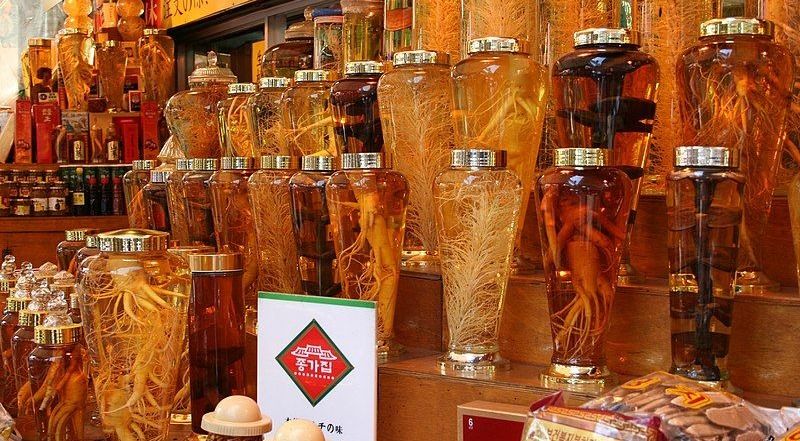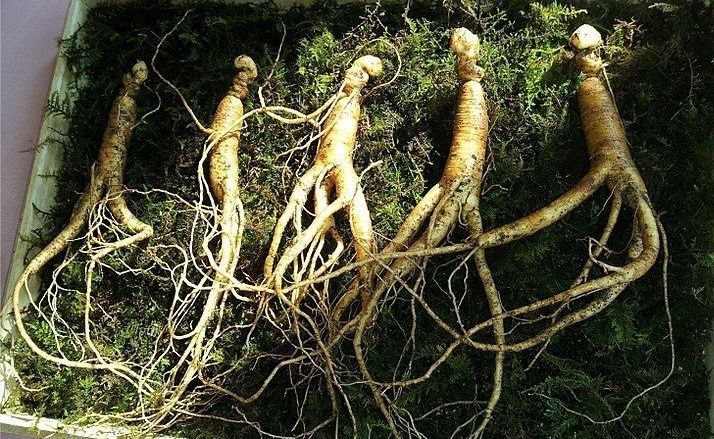Korean Ginseng: World's Most Expensive
Korea boasts the world's priciest ginseng, prized for its health benefits and meticulous cultivation.

Korean ginseng, often dubbed the "king of herbs" for its medicinal virtues, boasts a rich history spanning over 2,000 years.
Integral to traditional Eastern medicine, this esteemed root has now carved a niche in Western wellness circles.
Notably, entirely wild Korean ginseng can fetch prices starting at $17,000, reflecting its rare and treasured status.
What Is Korean Ginseng?
Korean ginseng, scientifically known as Panax ginseng, is a perennial herb native to the mountainous regions of Korea.
Revered for millennia in traditional Eastern medicine, this root is distinguished by its unique "man-shaped" appearance and its adaptogenic properties — compounds that help the body adapt to stress and restore balance.
It's believed to offer a myriad of health benefits including boosting the immune system, enhancing mental clarity and focus, improving stamina, and promoting overall vitality.
Beyond its medicinal use, Korean ginseng holds cultural significance in various Asian practices and rituals.
The root's quality and efficacy are often linked to its age, with older roots fetching higher prices due to their increased concentration of beneficial compounds, known as ginsenosides.
Here are some Intriguing Facts about Korean Ginseng:

The Different Categories of Ginseng
Korean ginseng can be categorized into three based on how it's processed:
Fresh Ginseng:
Fresh ginseng is cleaned and used without drying. However, it spoils faster in room temperature. Therefore, it's typically consumed directly or transformed into teas and soups, offering a natural taste and health perks.
White Ginseng:
White ginseng is peeled and dried, gaining a pale-yellow appearance. It's often powdered for consumption or made into tea, favored in warmer months for its cooling qualities.
Red Ginseng:
Red ginseng is distinctively steamed before drying, resulting in its red shade. Valued in traditional medicine, it's consumed in various forms, from slices to capsules, and is sought after in colder seasons for its warming properties.
Age Matters
The price of ginseng rises exponentially with its age. Wild ginseng that has grown naturally and remained undiscovered for decades can fetch astronomical prices. In 2012, a 300-year-old wild ginseng root was reportedly sold for over $400,000 in China.
Wild vs. Cultivated vs. Wild Simulated Ginseng
Wild ginseng, referred to as "산삼" in Korean, naturally thrives in mountainous regions. It's traditionally hand-harvested by specialists called simmani.
Ginseng is mainly split into two types: wild ("sansam") and cultivated ("insam"). The rarity of wild ginseng makes it more expensive than its farmed counterpart.
The scarcity and challenges in sourcing wild ginseng from its mountain habitats led to its cultivation. "Insam" translates to 'human-grown' in Korean, indicating its farmed nature, while "sansam" means 'mountain-grown', reflecting its wild roots.
Purely wild ginseng prices range from $10,000 to $100,000. Sellers often bundle several roots together, offering them for averagely $150,000.
The price of wild ginseng roots rises with age, and as they move through distribution, costs further increase, leading to buyer reservations.
A unique type, "sanyangsansam," blends both approaches; it's mountain-cultivated with human assistance but is still categorized as wild.
Using the wild simulated planting method, an 8-year-old ginseng root typically costs around $85. However, for roots over 10 years old, the price can easily fetch $170.
Geographical Significance
The Korean Peninsula has the ideal climate and soil conditions for ginseng cultivation. The colder regions, particularly the areas around the city of Geumsan, are globally acknowledged as the epicenter of high-quality ginseng.
Ginsenosides: The Main Active Ingredient
The primary active compounds in ginseng are called ginsenosides. Their concentration, which varies based on the age and type of ginseng, determines the root’s medicinal potency. The older the root, the higher the ginsenoside content.
For instance, Korean ginseng has 37 unique ginsenosides, while North American and Chinese ginsengs have only 14 and 15, respectively. Some ginsenosides, like Ra, Rf, Rg3, and Rh2, are found only in Korean ginseng.
Health Benefits
Korean ginseng is hailed for its adaptogenic properties, meaning it can help the body resist different stressors.
It's believed to boost the immune system, improve cognitive function, combat fatigue, enhance physical endurance, and even possess potential anti-cancer properties.
Cultural Importance
In Korean culture, ginseng is more than just a medicinal herb. It's given as a precious gift during special occasions, and it’s also a symbol of purity, health, and longevity.
Consuming ginseng chicken soup, known as Samgyetang, during the hottest days of summer is a popular tradition.
The Labor-Intensive Cultivation
The reason for the high cost of cultivated ginseng isn't just its medicinal benefits.
The cultivation process is labor-intensive. Ginseng prefers cool, shaded spots and needs protection from intense heat, especially in summer. It likes some moisture but not too much.
Because it's so particular about its environment, farmers put in a lot of effort to care for it. It's often said that ginseng grows best when it "hears" the sounds of wind, water, and caring footsteps.
Furthermore, the root is highly susceptible to pests, vulnerable to mountain moles and rats.
Historical Tales
Legend has it that ginseng has magical properties, and it was often depicted in ancient oriental paintings and stories as a panacea for all ailments.
There are tales of men risking their lives to retrieve the precious root from perilous mountain terrains.
Modern Applications
Beyond traditional medicine, Korean ginseng has found its way into cosmetics, energy drinks, teas, and even alcoholic beverages.
The global demand for ginseng-based products has skyrocketed in the 21st century.
In conclusion
Korean ginseng’s allure isn't just rooted in its therapeutic effects but also in its rich cultural and historical narratives.
As modern science continues to unveil more about its benefits, the legend of this ancient root only continues to grow, solidifying its position as one of the most precious and sought-after commodities in the world.


